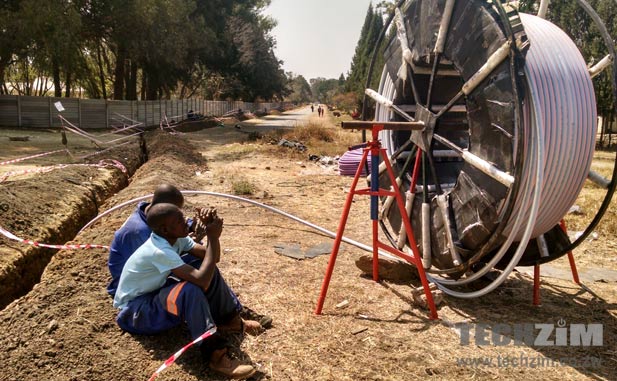The number of active fibre links in Zimbabwe increased by 101.4% in the last quarter of 2015 rising from 6,875 links to a total of 13,849 active links in just three months.
This information was shared by the local telecoms regulator, POTRAZ in its recent quarterly report on Zimbabwean telecoms. The increase represents the second largest jump in the uptake of a specific broadband technology behind LTE which experienced a phenomenal 374% growth during the same quarter.
Any growth in fibre use in Zimbabwe over the past year isn’t that difficult to understand, though. There has been an increased activity in the rollout of Fibre solutions as internet providers continue to make even more deliberate attempts to make fibre solutions a lead component of their product mixes.
Internet servicer providers like ZOL which has led the market in the provision of fibre solutions for both residential and corporate users repackaged its fibre suite and lowered prices at the beginning of 2015 to offer the market a $39 entry level fibre to the home package.
This was later challenged by the State-owned TelOne when it launched its own Fibre services lineup which had a slightly cheaper fibre to the home package priced at $36. Another operator, Telco, also rebranded its broadband lineup and ushered in a $35 fibre solution to compete in the aggressive market.
Since then all internet service providers with fibre solutions have been stepping up efforts to attract more subscribers, something which has led to changes such as the recent data cap adjustment and Fibroniks Lite launch from ZOL as well as the pairing of fibre packages with services like Netflix from Telco.
The same rivalry has also extended to the selling of fibre services to corporate users as internet providers are continuously touting the benefits of fibre broadband through the promotion of VAS services like VoIP.
All these changes, coupled with the realities around changing internet usage patterns which are pointing to the need for faster and more reliable broadband connections are what has encouraged an increasing number of Zimbabweans to consider fibre as an internet option.
The number of active fibre connections is likely to continue increasing thanks to an increase in market competitiveness as internet users are confronted with better priced and packaged alternatives for fibre services from the internet providers.

4 comments
??
Can you please help us understand more, what exactly are “active fibre links”?
Links being currently used by the ISPs, some can just decide to dig now and lay fibres but not light it up because maybe there is not enough customers around the area to set up everything needed.
In some parts of the world, if you light up fibre link, that link will attract taxes from local authorities or council which the fibre passes through. But if you switch light off, then no charges are made, it becomes dark fibre.
But seriously Nigel, you need to answer questions being asked directly from articles you write!!!!
Thanks for the detailed and informed explanation Macd Chip, and my apologies for the late response to the question.